How do we keep people close when distance is not easily bridged, but an enforced reality? In the 18th and 19th centuries, figurative jewellery played a large part, as a symbolic representation of a faraway or lost loved one. Objects like eye miniatures were used to embody love in ways that may seem strange today. But in this period before the invention and widespread use of photography, having and holding a piece of someone – sometimes literally, in the case of a lock of hair – mattered. While fashions shifted across the Georgian and Victorian eras, the desire for a material closeness remained constant.
This desire was not new; figurative jewellery has been used to symbolise love since ancient times. Fede rings, featuring two clasped hands, date back to the Roman period. Their name is derived from the Italian ‘mani in fede’, or ‘hands in faith’ – the handshake functioning as a marker of trust, exchange and, on occasion, the union of two people through marriage. Contrary to what books of wedding etiquette would have us believe about ancient and inviolable traditions, the practice of marriage in England was not standardised until the 1753 Marriage Act: before then, differing local customs, including the practice of handfasting (with or without the exchange of rings), prevailed.
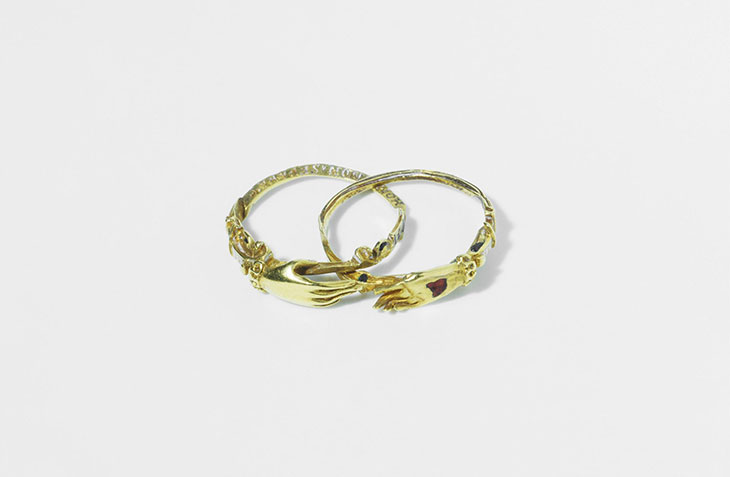
Gimmel ring (c. 1600), possibly Germany. © Victoria and Albert Museum, London
Fede rings, whether in an official church ceremony or otherwise, remained a popular choice for wedding and betrothal rings in the Georgian and Victorian periods. By this point jewellers had begun to combine their clasped-hands motif with the design of gimmel rings: two or three interlocking hoops that could be separated or joined into one ring. The clasped hands often opened to reveal a heart – or two hearts fused together.
Hands are an obvious sign of union. But sometimes secrecy was paramount in the exchange of love tokens. Eye miniatures (‘lovers’ eyes’) came into fashion among the upper classes in the 1780s, a brief and fascinating phenomenon whose popularity has been linked to the forbidden relationship between Mrs Maria Fitzherbert and George, Prince of Wales (the future George IV). In a postscript to a letter to Fitzherbert in 1785, the prince wrote, ‘I send you a parcel […] and I send you at the same time an Eye.’ The ‘eye’ he referred to was one the delicate watercolours on ivory that were set in lockets or cases, often surrounded by pearl and precious-stone settings. They captured the sitter’s eye and brow, occasionally including a curl of hair or sliver of nose, as in one wispy, wistful example from the Philadelphia Museum of Art.
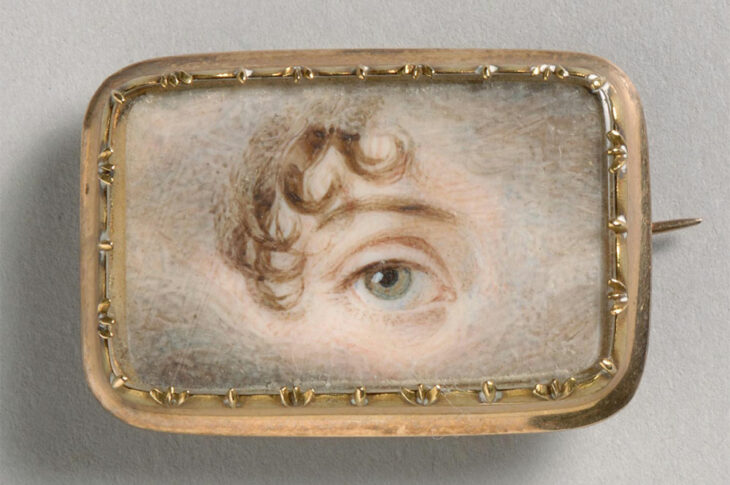
Portrait of a Left Eye (c. 1800), England. Philadelphia Museum of Art
These intimate portraits were used to both see and be ‘seen’ by the beloved, as Hanneke Grootenboer explains in her book Treasuring the Gaze (2013). In addition to symbolising a loving exchange of gazes, eye miniatures were frequently worn and handled, kept close and secret. ‘There is a kind of reciprocity [there] that’s […] very much about embodiment as a form of touch,’ Grootenboer says during a phone interview. ‘It’s not just a gift to […] own, it’s a gift to feel and touch all the time, to constantly try to bridge that gap of absence [or] distance.’ The cliché of eyes being windows to the soul is at least biblical in origin, but it was never quite so literally interpreted.
Eye miniatures were mostly out of fashion by the 1840s, used by Dickens in Dombey and Son to portray a character as a spinsterish relic. The advent of photography in this period contributed to their demise, replacing painted depictions with a ‘real’ likeness. However, Queen Victoria commissioned several eye miniatures of family members in the 1850s and after Prince Albert’s death, when they became a way for her to embody her grief – along with other forms of sentimental jewellery, including hair jewellery.
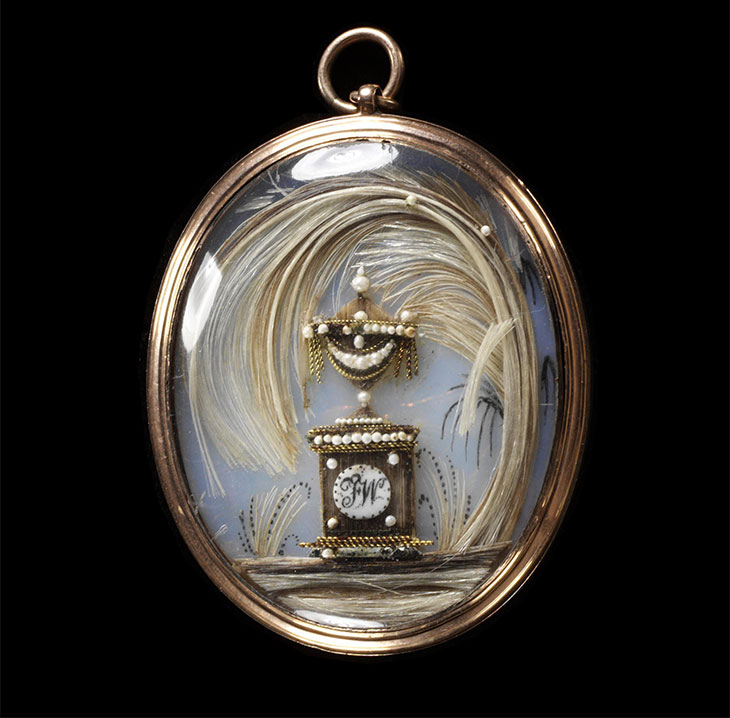
Gold locket containing hair (1775–1800), England. © Victoria and Albert Museum, London
Though Queen Victoria’s long period of mourning intensified the fashion for mourning jewellery, personal hair mementoes had been popular since the Middle Ages. While not figurative, they certainly acted as representations of lost and distant loves, and they took myriad forms, from simple rings and lockets to fanciful woven designs in brooches and wreaths. Their popularity transcended class, as simple sentimental pieces could be made at home and modest settings were available alongside expensive, jewelled ones. In some cases, two locks of hair were simply placed together. Hair artists, meanwhile, specialised in the creation of more intricate illustrations, using curls of hair to shape classical symbols of mourning like urns and weeping willows. One late 19th-century locket in the V&A’s collection shows the hair in a mournful arch over an urn, turning the piece of the lost loved one into an expression of grief.
Hair was often combined with other symbolic forms in the same piece of jewellery. Fede rings, eye and portrait miniatures might contain locks of hair, compounding the ways a loved one could be visualised and made present. In the early days of photography, locks of hair were often kept within framed photographs as well. But their status soon faded from sentimental token to strange souvenir. ‘There’s clearly a whole trajectory of disembodiment going on in the way in which we deal with our souvenirs,’ Grootenboer says. Today, ‘a photograph has become enough’. Digital photography and videos give us the illusion of immediacy; we can access a loved one’s image in an instant. Where our ancestors had to wait weeks or months for communication, we can tap a screen and see someone speak and smile in real time. But then we hang up, turn off our phones, and only a blank screen remains.
Unlimited access from just $16 every 3 months
Subscribe to get unlimited and exclusive access to the top art stories, interviews and exhibition reviews.

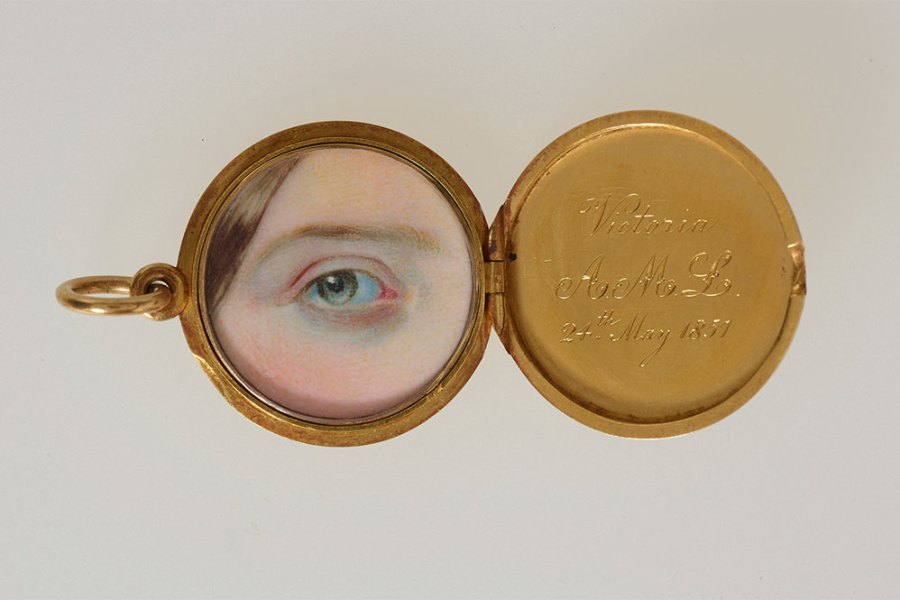
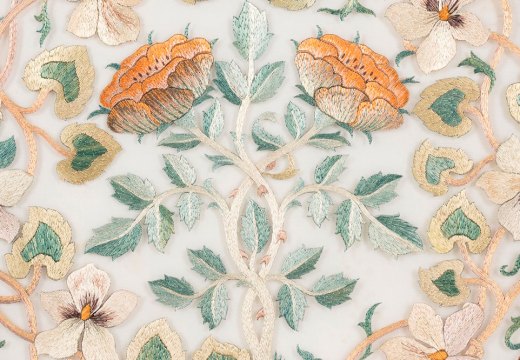
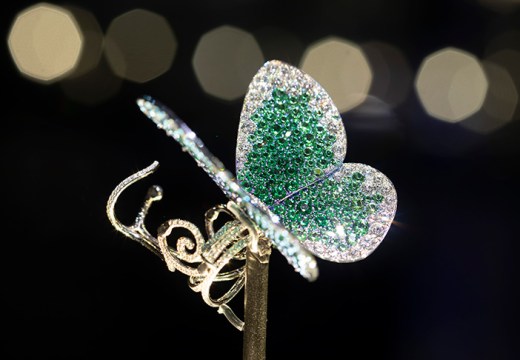
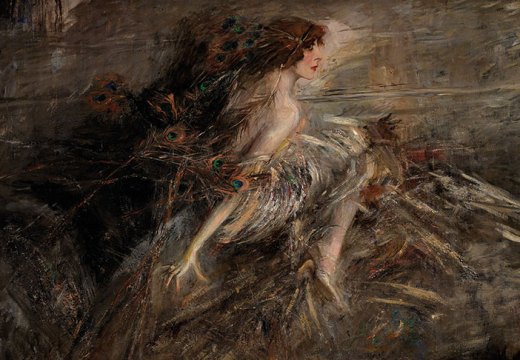









![Masterpiece [Re]discovery 2022. Photo: Ben Fisher Photography, courtesy of Masterpiece London](http://www.apollo-magazine.com/wp-content/uploads/2022/07/MPL2022_4263.jpg)
It’s time for the government of London to return to its rightful home